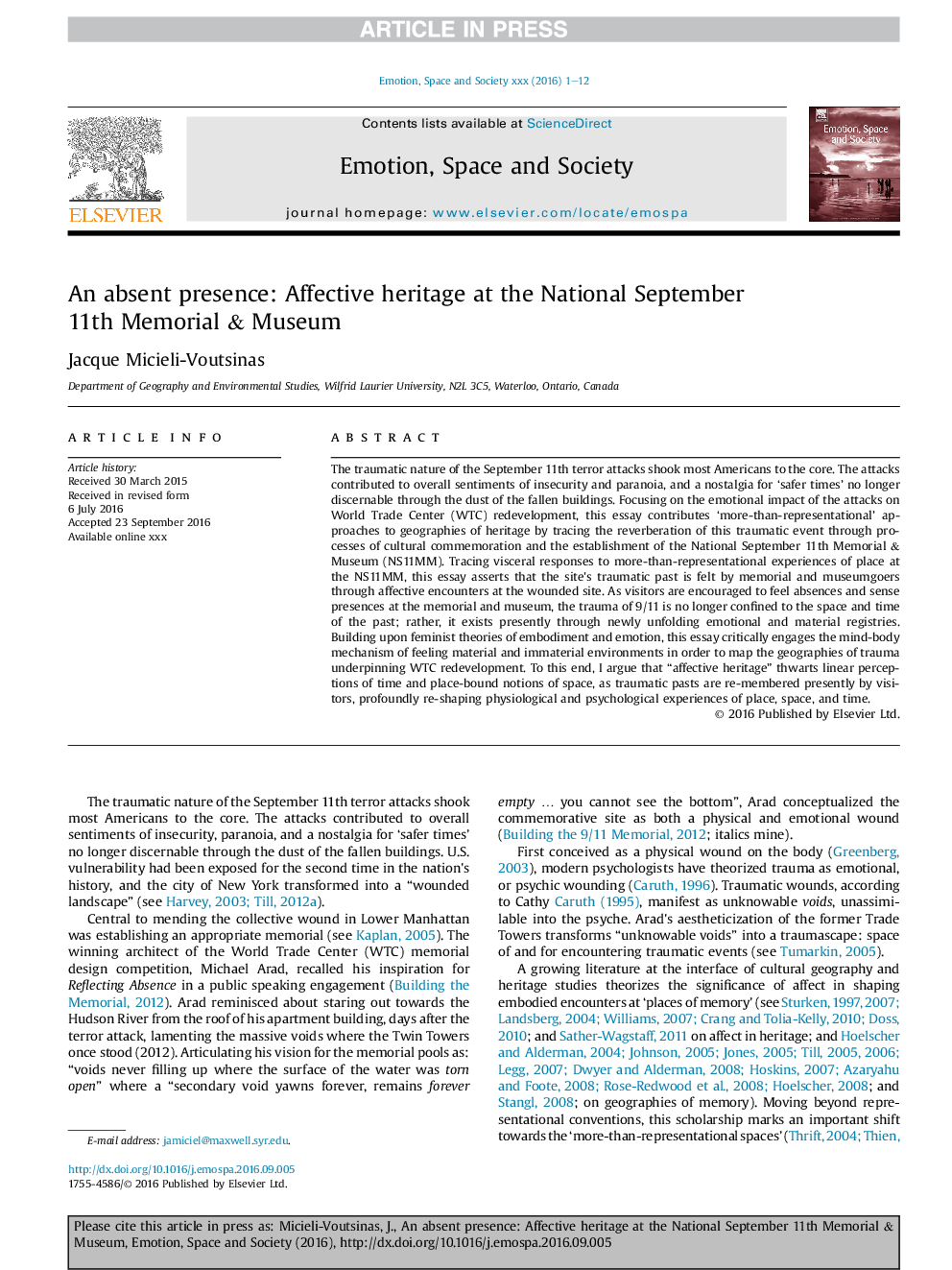ترجمه فارسی عنوان مقاله
حضور غیرواقعی: میراث مؤثر در ملی 11 سپتامبر، یادبود و موزه
عنوان انگلیسی
An absent presence: Affective heritage at the National September 11th Memorial & Museum
| کد مقاله | سال انتشار | تعداد صفحات مقاله انگلیسی |
|---|---|---|
| 127993 | 2017 | 12 صفحه PDF |
منبع

Publisher : Elsevier - Science Direct (الزویر - ساینس دایرکت)
Journal : Emotion, Space and Society, Volume 24, August 2017, Pages 93-104

